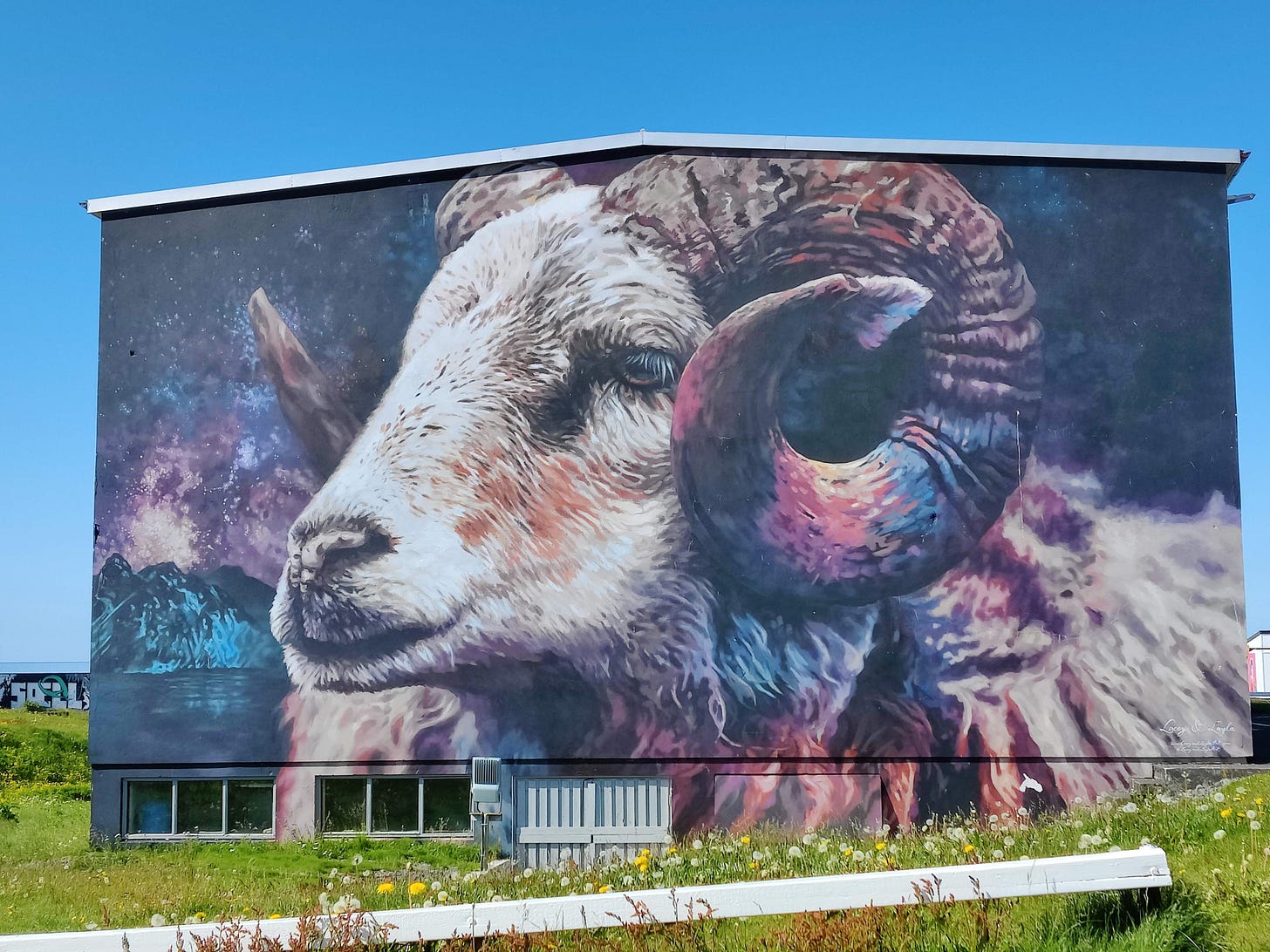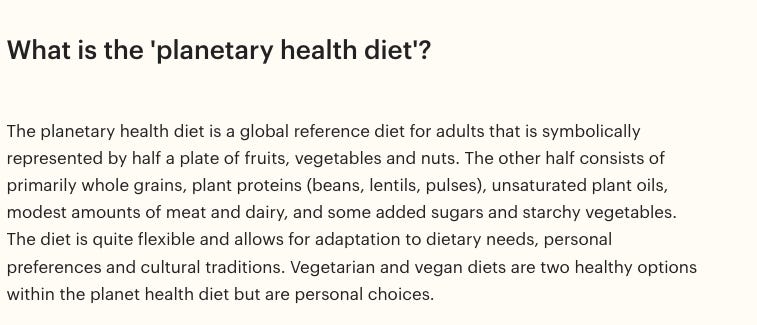A Meaty Issue for 2022
A newsletter about food systems, climate change and everything connected to them
Happy New Year and here’s to hoping 2022 has a better script for us!
Welcome back to Thin Ink. At this time of the year, many of us tend to come up with resolutions and plans on how to become a better version of our current selves and often, that involves diets - eating better, drinking less, etc etc etc.
So I thought it would be timely for the first issue of Thin Ink in 2022 to focus on meat. In case the pun-y title didn’t give that away.
Why meat?
For at least half a dozen reasons.
1. A really interesting paper in Nature Food by an international team of researchers, published Monday (Jan 10), found a carbon “double dividend” - lower emissions + more land to capture carbon - if 54 rich countries switch to more plant-based diets.
2. This is because about 70% of food-system emissions come from livestock, particularly cattle, in high-income countries where they also eat a lot more meat (six times as much compared to poor countries in 2013). In addition, the area needed for grazing and growing feed takes up about 80% of all agricultural land, or about 35% of the total habitable land in the world.
3. Another interesting study from Tulane University and University of Michigan, which came out yesterday (Jan 13), showed how swapping just one high-impact food item from American diets - mainly beef, whose production creates eight to 10 times the emissions of chicken and 20 times that of nuts, seeds or legumes - could result in smaller carbon and water footprint.
4. Heated debate in Spain around industrial mega farms after the country’s consumer affairs minister criticised them as environmentally-unfriendly in an interview with The Guardian last month.
5. The dispute in Spain shows the issue isn’t just about beef because it is the pig industry that is both environmentally- and socially-exploitative there, as shown by my recent report with Lighthouse Reports on conditions in slaughterhouses and farms. If you missed it, you can read it again below.
6. In the US, the White House issued a fact sheet on Jan 3, saying a lack of competition in the meat industry is “hurting consumers, producers and our economy”. For example, four meat-packing companies control 85% of the beef market and four processing firms control 54% of poultry market and about 70% of the pork market.
The Biden-Harris administration has said it will spend $1 billion to fix this, although there are questions on whether it will really be an effective remedy.
All of the above highlight how this topic is going to be a big one not just for this year but for many years to come.
Paul Behrens, senior author of the paper mentioned in (1) and whose book I’ve mentioned a few times in this newsletter, said it best in an e-mailed response to my queries.
“We know that current food systems on their own can push us above 1.5 degrees. Some foods result in more emissions than others. Animal agriculture and in particular red meat can result in large amounts of emissions from belches/ manure/ fertiliser and more.”
“We don’t just need an Energy Transition we need a Great Food Transition.”
So why are the two scientific papers noteworthy?
The paper on rich nations provides the kind of nuance that is often missing in the debate on meat consumption.
By focusing the dietary changes on countries that represent “68% of global gross domestic product and 17% of population”, it is targeting consumers that already eat far more meat than is healthy and who already emit the most greenhouse gases per capita due to their consumption patterns.
Paul also told me one reason they chose to look at nations classified as ‘high-income’ by the IMF was because of the availability of plant-based protein options. Lower-income countries eat less animal protein and often lack these options.
North America is home to only 5% of the world’s population but accounts for nearly 18% of total CO2 emissions so any effort to slash emissions there, which is what the Tulane/Michigan paper tried to do, is critical.
The authors also said they kept it simple and focused on reducing beef consumption versus all meat so that it would be “easy for individuals who are motivated to change their diet for environmental reasons”.
That paper also looks at how swapping beef for something else could save us some precious water, another important aspect since agriculture is responsible for 70% of global freshwater withdrawals.
What are the findings?
High-Income Nations Paper
It looks at the EAT-Lancet diet (see below) - a “plant-forward diet” which recommends people to double their intake of nuts, fruit, vegetables and legumes, and eat half as much meat and sugar to prevent millions of early deaths, cut greenhouse gas emissions and preserve land, water and biodiversity.
The diet has come under criticism as unaffordable and not taking into consideration the needs of consumers in developing countries. Of course, meat lobbies have unsurprisingly also pushed back.
But in rich countries, shifting to this diet would reduce annual emissions from direct agricultural production by 61.5%, and spare more than 426 million hectares of land, an area slightly larger than that of the European Union (423 million hectares), providing “substantial opportunities for carbon sequestration”.
Returning these former cropland and pasture to their natural state could remove nearly 100 billion tonnes of carbon dioxide from the atmosphere by the end of the century, equivalent to 14 years’ worth of current agricultural emissions.
This could help us stick to a warming of no more than 1.5 degrees Celsius, beyond which lie catastrophic impacts, scientists have warned.
CAVEAT - “While linked, these elements play out over two different timeframes: the first, reduced production emissions, influences the sector’s annual GHG contribution, while the second, sequestration, often requires decades or even centuries to realize its full potential,” the paper said.
Interestingly, four countries alone - United States, France, Australia and Germany - would provide half of emissions reduction from dietary changes as well as carbon sequestration from land spared from livestock farming.
For emissions reduction - United States (29.9%), France (7.1%), Australia (6.5%) and Germany (4.4%)
For sequestration - United States (26.3%), Australia (13.5%), Germany (7.7%) and France (7.6%)
This is because all these countries have large populations, diets that are intensive in animal products, and big beef and dairy production sectors, according to Paul.
- “This is a total opportunity,” he added, not only because of the reduction in emissions and the potential for but capturing carbon but also “biodiversity, water quality, air quality, access to nature, all sorts of different benefits that would actually come from this across so many different things in human health and human welfare”.
The Tulane/Michigan Paper
Used real-world data from a nationally representative survey of what more than 16,000 Americans eat in an average day.
Around 20% of survey respondents ate at least one serving of beef a day.
If they collectively swapped, say, one serving of ground turkey for ground beef, their diets’ greenhouse gas emissions would fall by an average of 48% and water-use impact by 30%.
If only 20% of all Americans who ate beef once a day would switch to something else for just one meal, that would reduce “the overall carbon footprint of all U.S. diets by 9.6% and reduce water-use impacts by 5.9%”.
Reducing beef consumption has the biggest impact in terms of emissions compared to substituting milk (3.5%) and shrimp (10 times) as well as water scarcity compared to dairy (2.2%), grapes (four times) and almonds (seven times).
This doesn’t mean we shouldn’t think about switching other ingredients. For example, replacing shrimp with cod would lead to 34% reduction in emissions and dairy with soy milk would result in 8.1% reduction. In terms of water usage, peas instead of asparagus will give you 48% decrease and peanuts instead of almonds provide 30% reduction.
Things that make you go hmmmm…
The High-Income Nations Paper’s calculations are based on agricultural activities and not the whole food systems, this means it doesn’t look at emissions from transportation, processing, refrigeration, wholesale and retail.
But it looked at items that have received little attention. Stimulants (coffee, cocoa and associated product, tea), alcohol (wine, beer, fermented beverages, et al), edible offal and other meat (for example, horse, donkey, camel, rabbit and game meat) - and found that although they make up only 5.8% of dietary emissions, “they represent a non-negligible carbon sequestration opportunity”, nearly 20% of the total they have identified if high-income nations cease all consumption of these items.
However, calling for substantial reductions in these items “would be a controversial cultural topic”.
Authors of the Tulane/Michigan paper said they didn’t know the production source of foods consumed by survey respondents so this might affect some of the emissions calculations, particularly when it comes to seafood/shrimp. Apparently, wild-caught tiger prawns from Australia have more than seven times the emissions of wild-caught banana prawns from the same area, and industrially produced southern pink shrimp from Senegal is many times more impactful than that from artisanal production.
They also looked only at substituting beef with other animal-based foods - chicken, turkey, pork - and not on plant-based alternatives because they weren’t widely available during the years of their study.
Further Reading
The High-Income Nations Paper is behind a paywall (GRRRR) but there are some really good write-ups. Here’s a detailed one from Carbon Brief.
The Tulane/Michigan paper is here and there’s a shorter PR piece here.
elDiario.es has put the Spanish minister’s comments to The Guardian in context. (in Spanish)
The great Jane Goodall has entered the debate on mega farms in Spain. Here’s a piece, also from elDiario.es (in Spanish).
A podcast version of the launch of the Spanish pork report is also out.
Tweets from a journalist who was part of the Spanish pork investigation with Lighthouse Reports (in Spainsh but you can use ‘translate tweet’ function) where he described his trip to visit an area with massive pig farms. They went viral. As they should.
As always, have a great weekend! Please feel free to share this post and send tips and thoughts on twitter @thinink, to my LinkedIn page or via e-mail thin@thin-ink.net.










